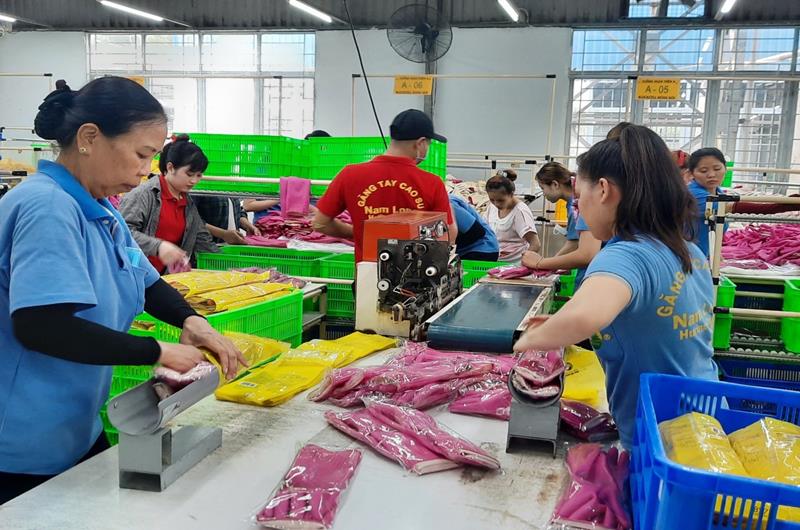 High-tech agricultural farm in Xuan Loc District has
approached 4.0 technology in production. Photo: Phan Anh
High-tech agricultural farm in Xuan Loc District has
approached 4.0 technology in production. Photo: Phan Anh
In fact, many farm owners and
businesses investing in Vietnam's agricultural sector have approached and
applied agriculture 4.0 quite methodically. There are enterprises investing in
importing the most modern machinery and equipment in the world to supply the
Vietnamese market. Quite a number of enterprises, including both small and
medium enterprises, invest methodically and put modern technology into
production. Many farms have introduced programmed robots to automatically
replace human power, especially in harsh working environments; applying solar
energy to self-produce electricity for production in order to reduce the input costs.
In fact, Vietnam's agriculture is
capable of approaching the 4.0 revolution. The livestock industry on an
industrial scale of dairy cows, pigs, chickens, shrimps, catfish, etc. all have applied automation and closed production
chains. Specifically, many livestock farms in the province invest in automatic
and modern machinery lines, so it only takes 1-2 workers to control the farm
with thousands of pigs, tens of thousands of pigs, hundreds of thousands of birds.
Production of vegetables, flowers and fruits also initially applied
technologies such as: automation of seedling production; mechanization of
tillage; planting.
However, according to experts,
investing in modern machinery and equipment requires huge capital. With the reality of production in Vietnam, it
is not expected that there will be modern, package 4.0 agricultural production
models using automatic machines and robots in production. Depending on actual
conditions to apply each part of agriculture 4.0. For example, using a
smartphone to control an automatic irrigation system hardly costs much more
than an existing automatic irrigation system. Agriculture 4.0 can start from
the simplest step as farmers and consumers use smartphones to control automatic
watering and fertilizing systems; implement traceability of agricultural
products, etc.
Currently, Vietnamese farmers are
familiar with using smartphones to find out information every day. Farmers are
very "hungry" for information, especially information on new
technologies and techniques in production, but lack official sources when
learning. Here, the role of the state is to invest in building a source
of information from production to information about the market. From a local perspective, provinces need to build
information technology centers to connect with farmers, even this is a bridge
between farmers and the world agricultural market. Using information technology
to transparently manage the agricultural market. Because of this information
channel, farmers have problems such as buying the poor quality fertilizer or pesticides, they can respond immediately, widely to
the community, no one dares to do the
fake business because they will not be able to
sell their goods in the market.
This is also the content
emphasized by Minister Le Minh Hoan of Agriculture and Rural Development, the
Ministry of Agriculture and Rural Development will immediately embark on
digital transformation. Because this will be a push to create value for
agricultural products and development. Specifically, the value of agricultural
products through the e-commerce platform connects all farmers and all
consumers; Farmers can post their products on the e-commerce websites and each product in each land has its own brand, origin
and is not counterfeited, etc. Revolution 4.0, digital transformation is compared like
a wind and the agriculture sector
take advantage of that wind to grow.
Phan Anh